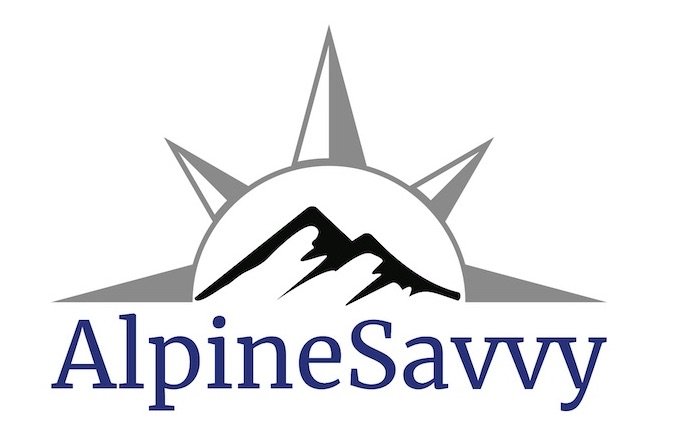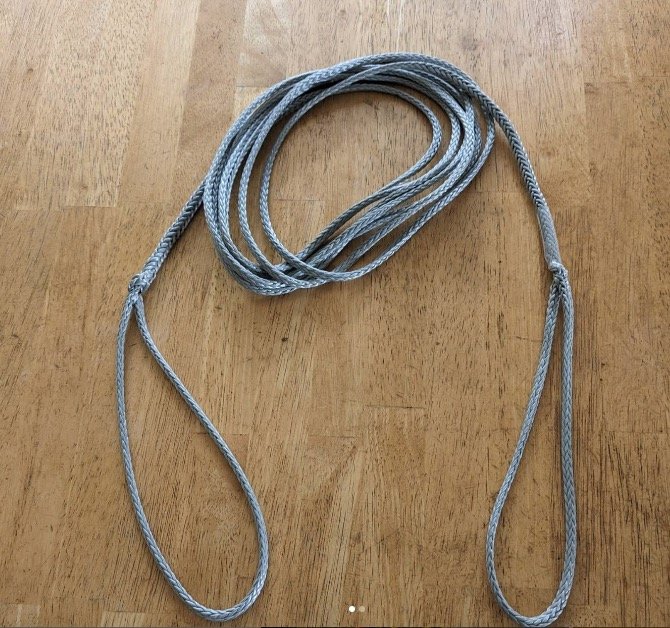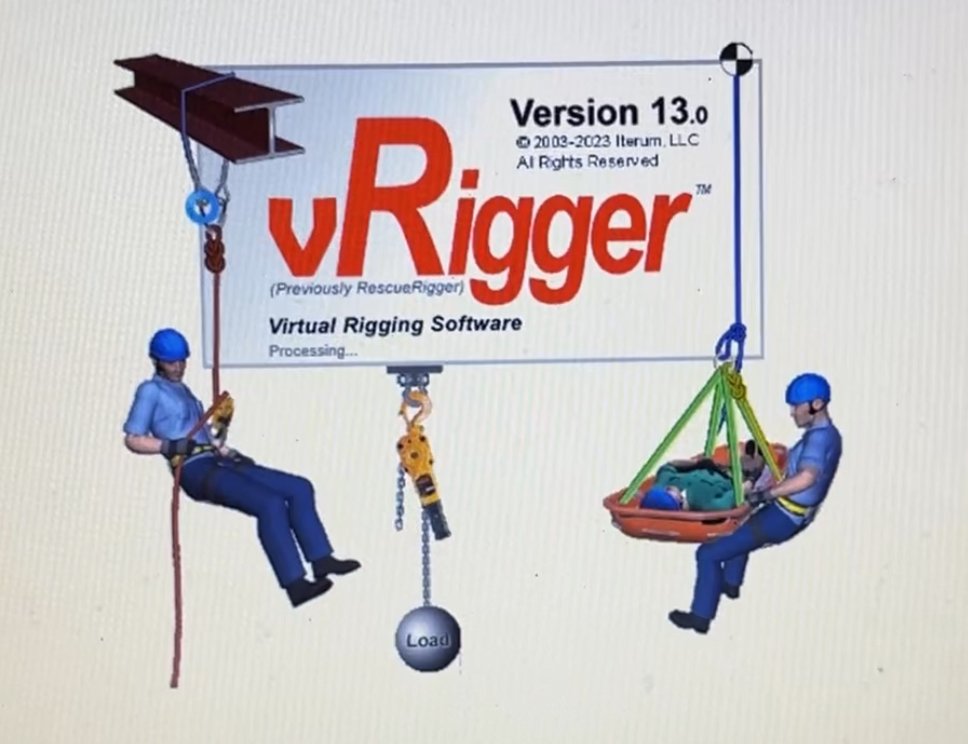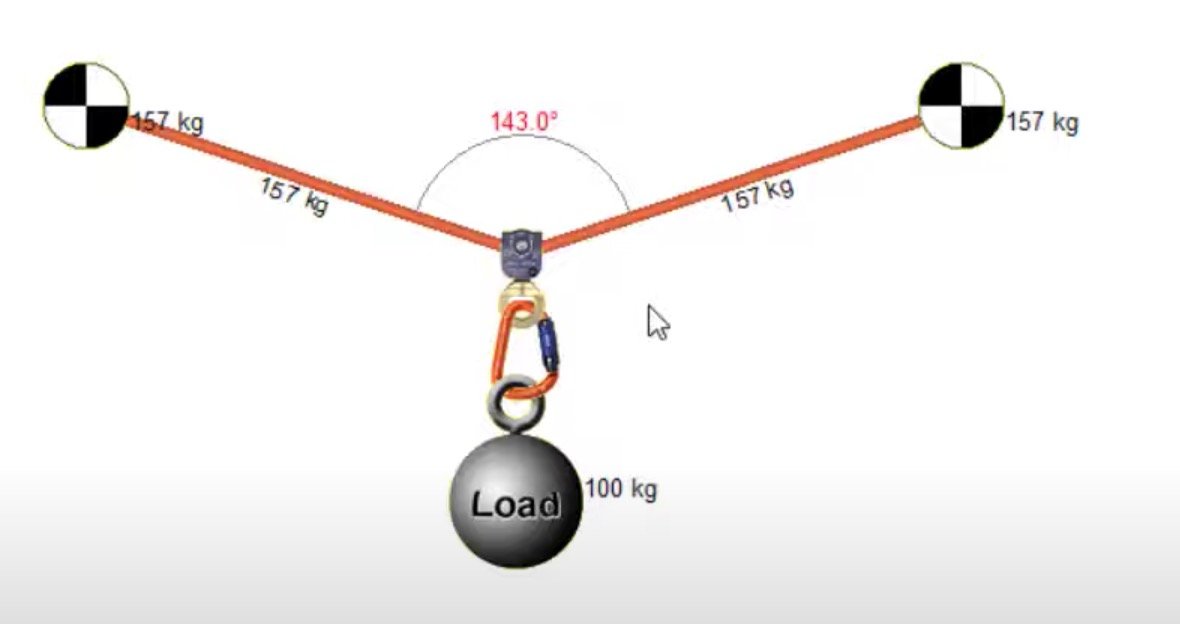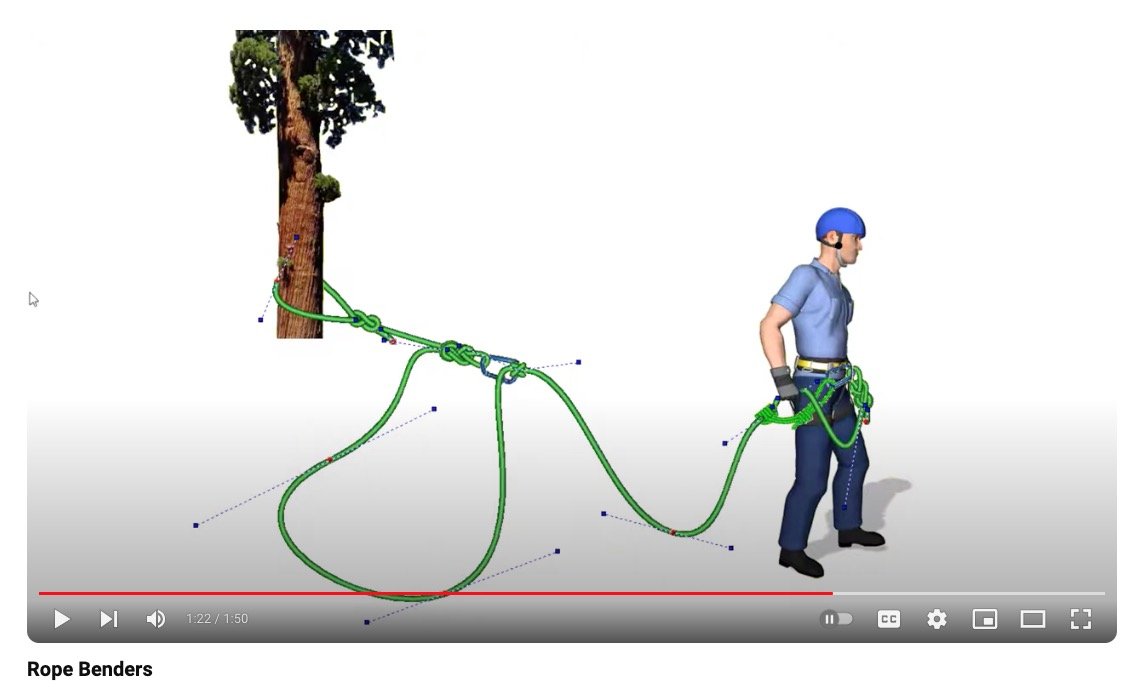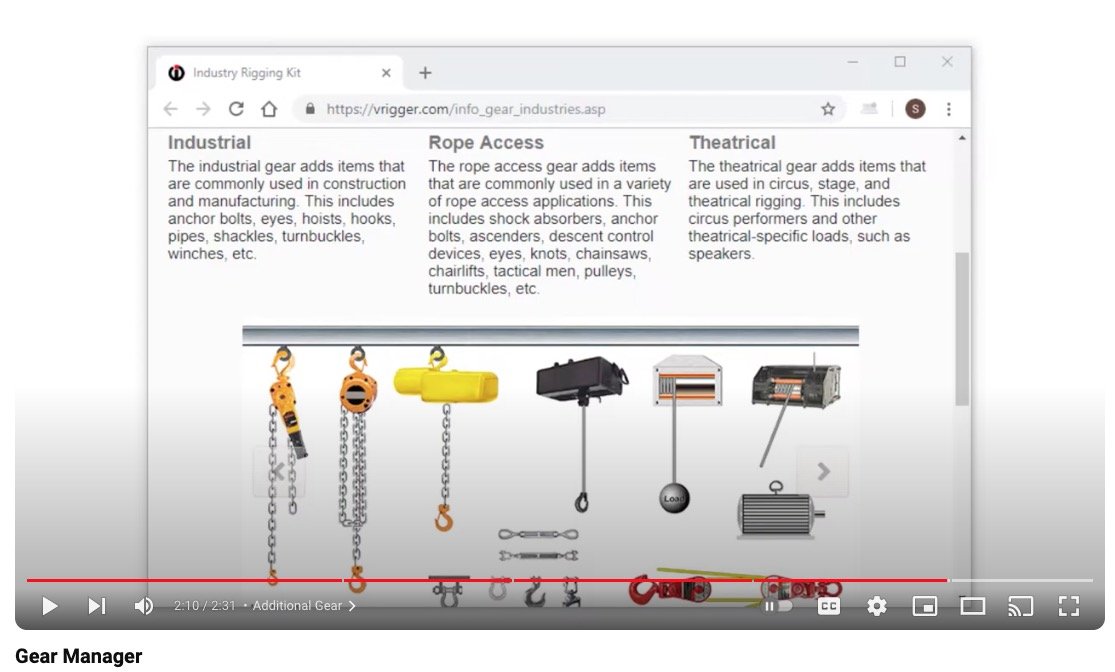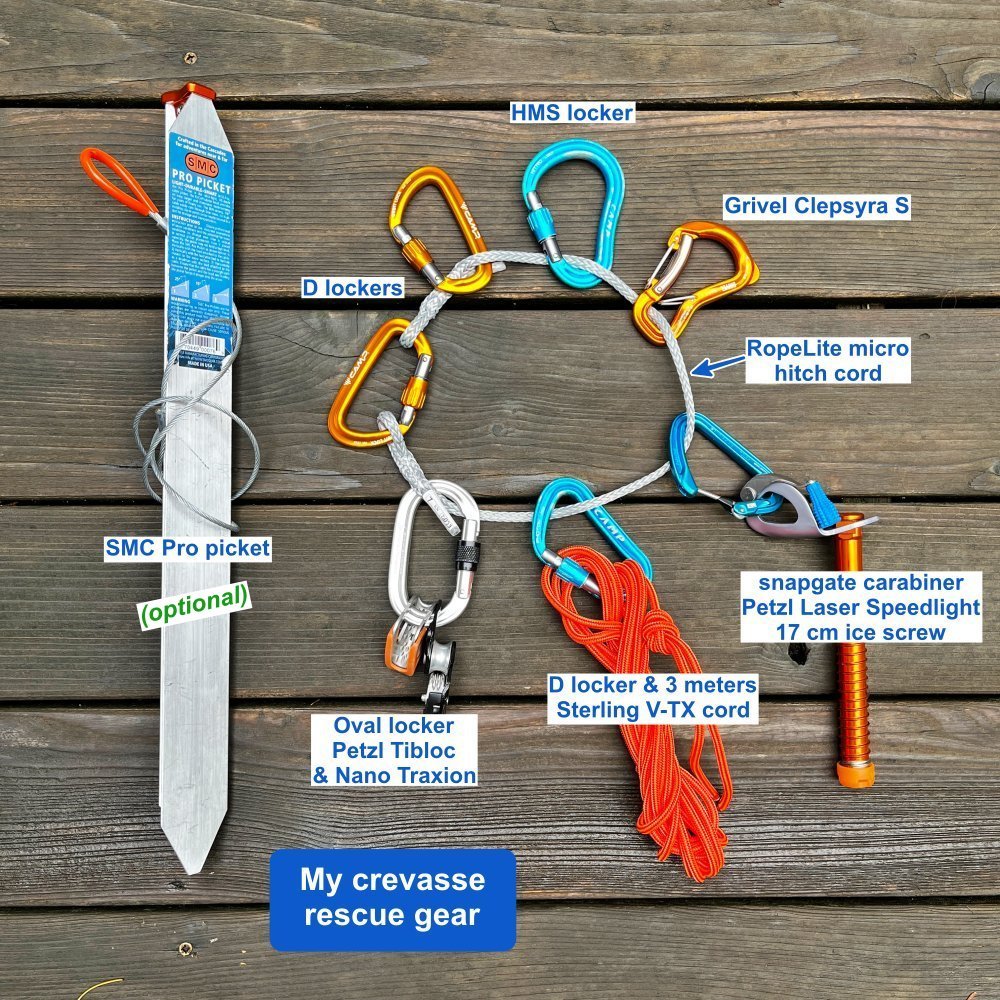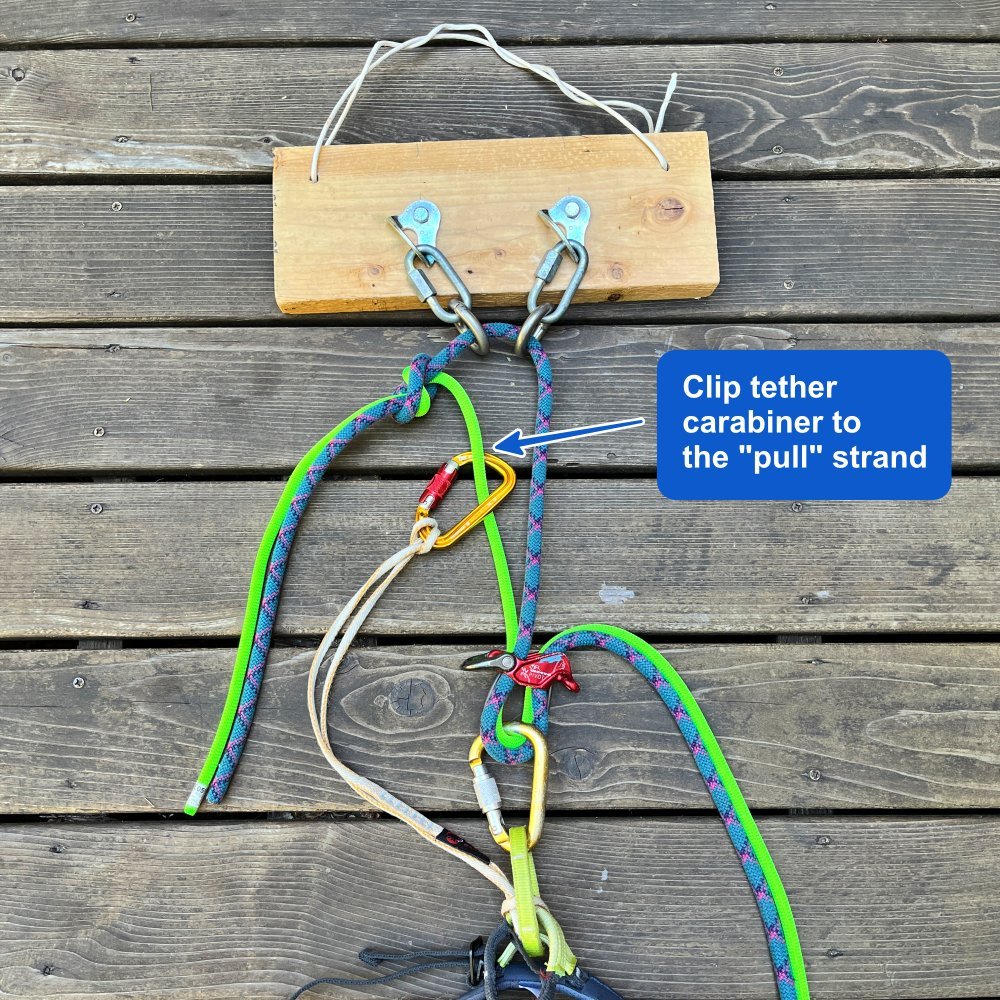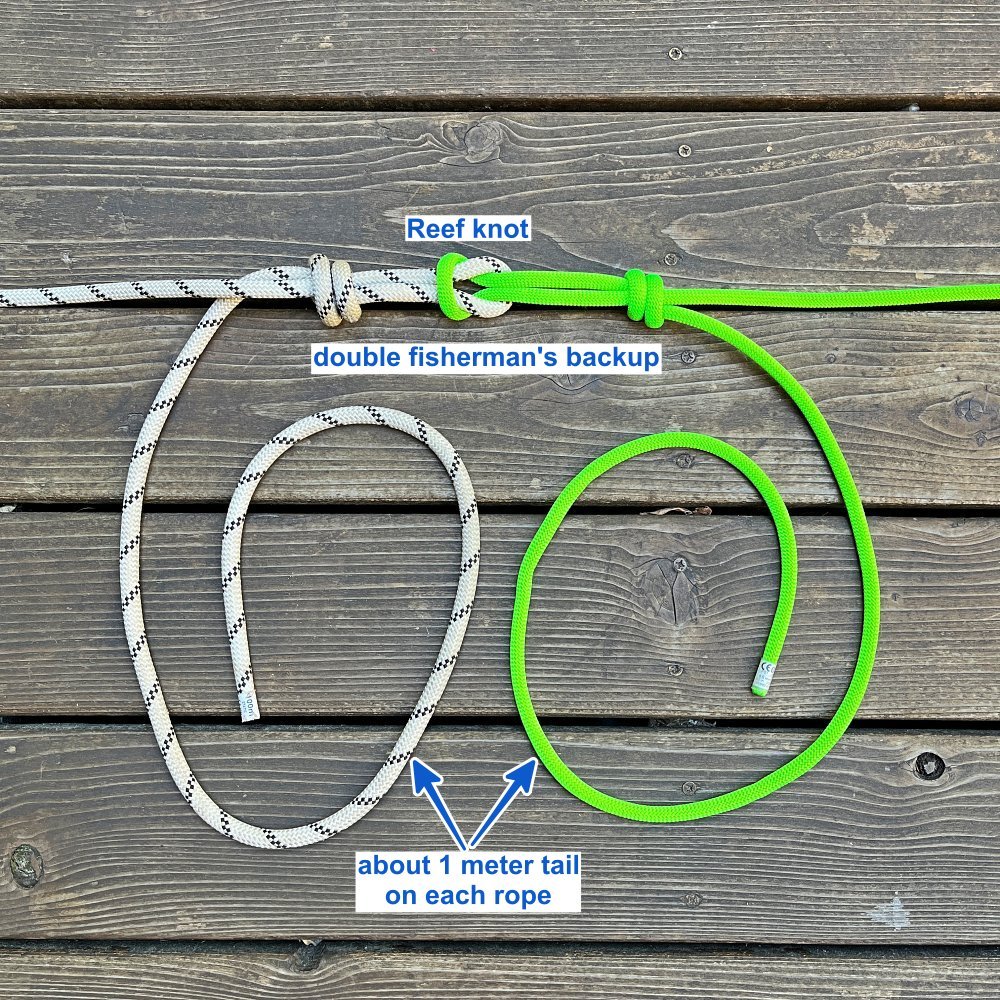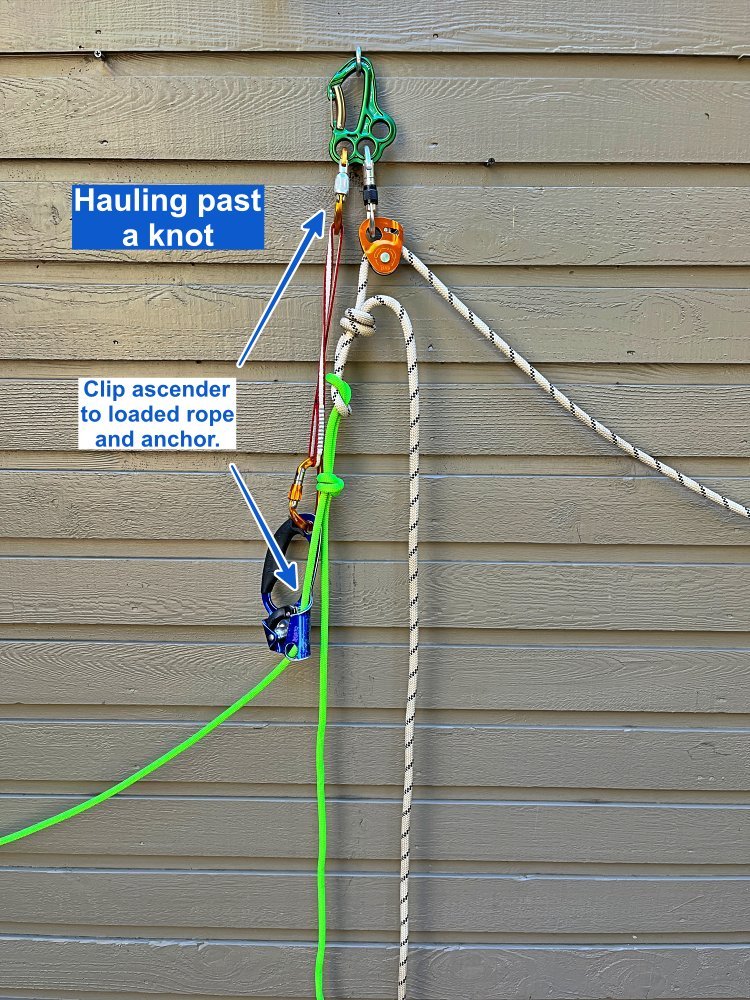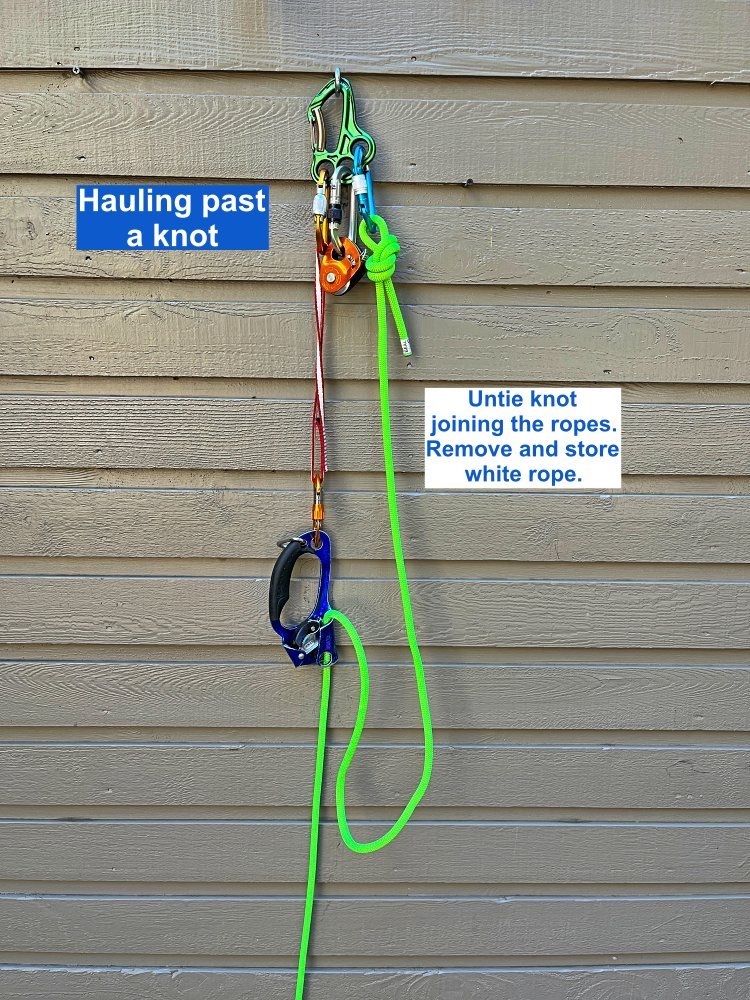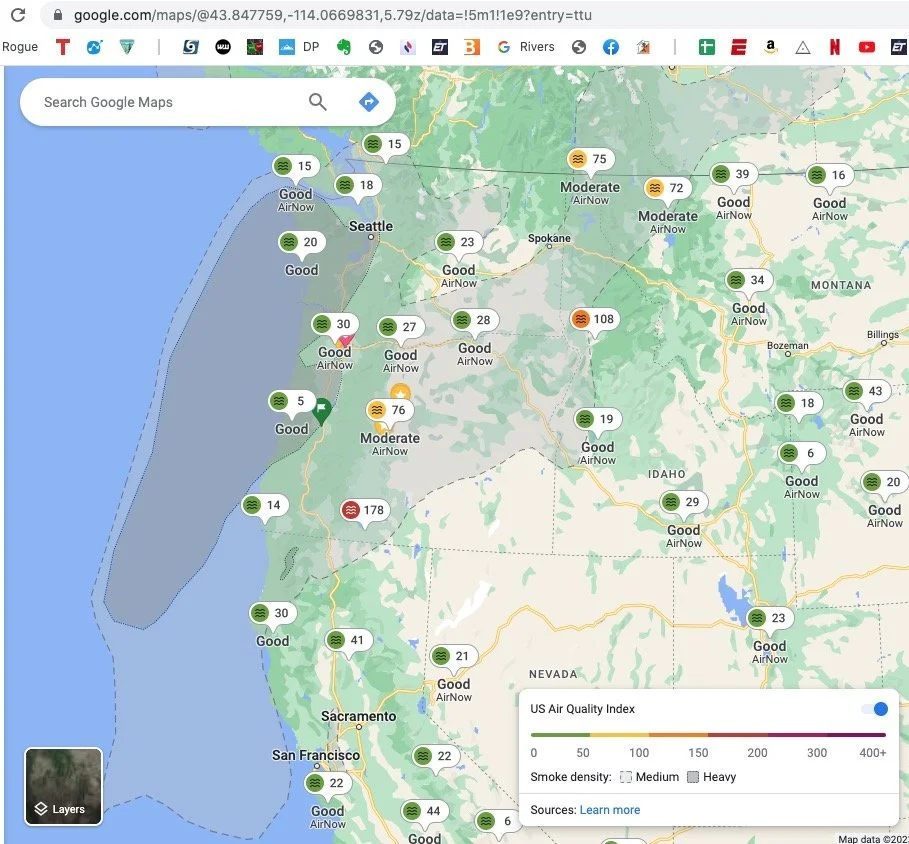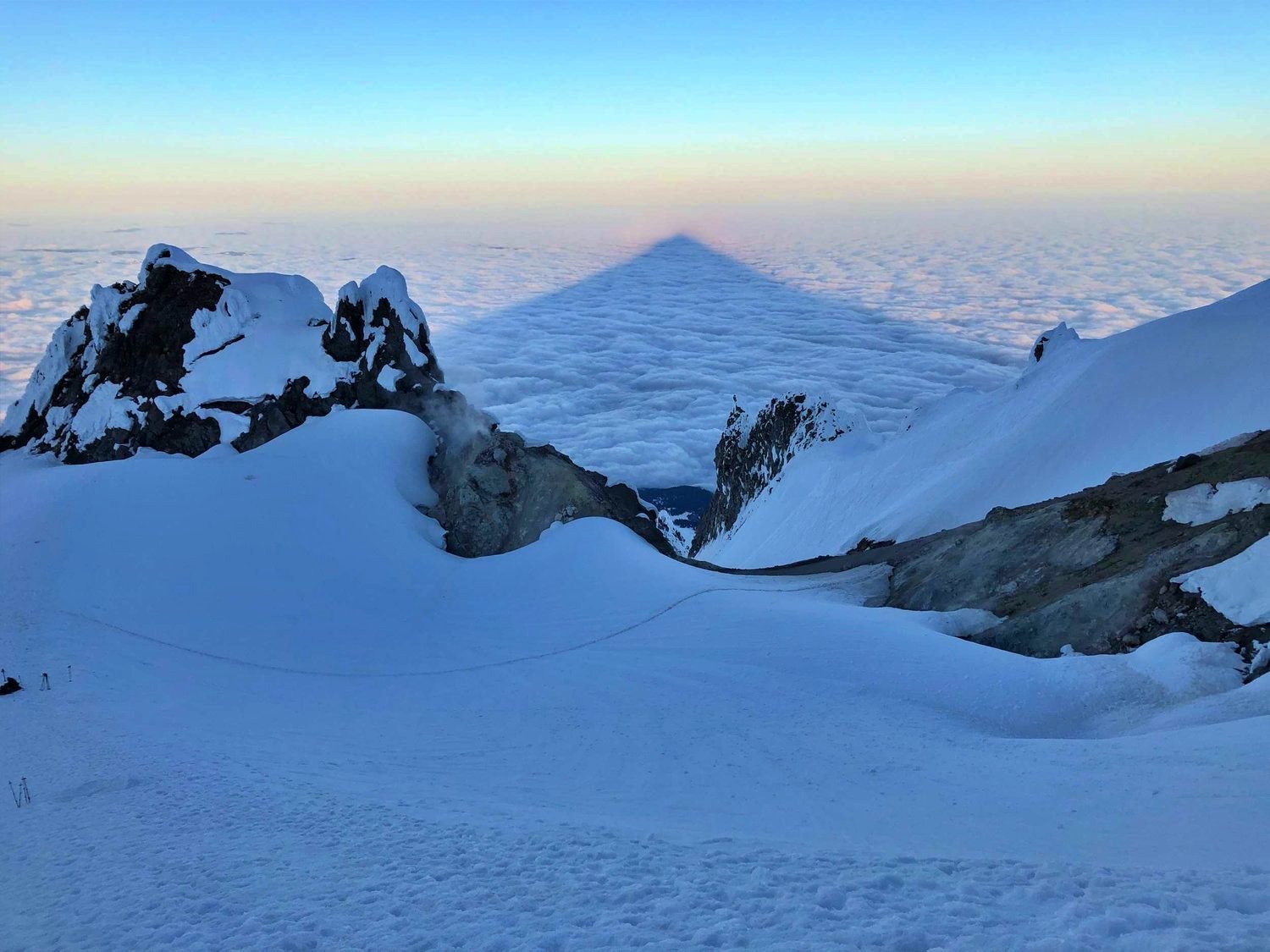
Alpine Tips
Innovative Gear - Gear Perspectives
Gear Perspective, from Kingsburg California, specializes in gear for canyoneering. Several of their products cross over well to alpine climbing and ski mountaineering.
This section of Alpinesavvy highlights small companies, inventors, artists and other superb humans who make exceptional climbing-related gear.
If you know a company that belongs on these pages, please let me know.
I don't get any sort of advertising fees / benefits / kickbacks from these pages. I simply want to showcase cool companies to a wider audience.
Occasionally these companies may give me a product to review. If that happens, I’ll tell you.
Listings are alphabetical.
Good canyoneering gear can take you to some amazing places like this . . .
Gear Perspective, based in Kingsburg California near the beautiful central Sierra Nevada, has a focus on gear for canyoneering.
Gear Perspective website
Gear Perspective Instagram, @gearperspective
Here are some of their more popular offerings.
Micro 30 RADlineRope bag - This bag is the perfect size for 30 meters of 6 mm cord, such as the Petzl RADline. This makes it very helpful for Alpine climbers as well as canyoneering. It has double grommets in the bottom so you can tie a fixed loop, very handy for crevasse rescue. It was designed with collaboration from IFMGA guide Dave Searle, so you know it's solid. Gear Perspective gave me this bag for review, and I love it. They also make a larger version for a 60 meter 6 mm rope, if you have a longer tagline. (On their website it's under the “Search and Rescue” category.)
Shoulder / belt pouch - This is another one of their products that crosses over to climbing and backpacking. Keep your phone, energy bar, folded map and other essentials at the ready on your shoulder strap. Comes in lots of fun colors!
Double end rope bag V2 - Canyoneering folks have long realize the benefits of rope bags to keep your life tangle free. Some techniques benefit from having access to both ends of the rope in the bag, and this is designed for that.
60 meter and 30 meter rope bags (here, with 6mm rope)
Shoulder / belt pouch
Double end rope bag
image: https://gearperspective.com/
Innovative Gear - High Mountain Gear
High Mountain Gear is from Tacoma Washington. Founder Kyle Willis designs and sews small batch made-in-USA products for alpine and big wall climbing, much of it from re-purposed fabrics.
This section of Alpinesavvy highlights small companies, inventors, artists and other superb humans who make exceptional climbing-related gear.
If you know a company that belongs on these pages, please let me know.
I don't get any sort of advertising fees / benefits / kickbacks from these pages. I simply want to showcase cool companies to a wider audience.
Occasionally these companies may give me a product to review. If that happens, I’ll tell you.
Listings are alphabetical.
High Mountain Gear founder, Kyle Willis
High Mountain Gear is a small-scale gear manufacturer in Tacoma Washington. Founded by Kyle Willis, HMG makes some very cool products for big wall and alpine climbing.
High Mountain Gear website
High Mountain Gear Instagram, @highmountaingear
Kyle is a master at sewing and designing. He strives to use as much recycled and repurposed material as possible, such as extra sturdy sailboat sails.
HMG’s most innovative gear is the Taco portaledge system, the lightest portaledge (and fly!) currently available. Kyle was nice enough to send me one for review, and it's quite amazing. It's a sort of envelope into which you insert a Thermarest-style inflatable sleeping pad, and it's surprisingly comfortable.
High Mountain Gear also makes rope bags, which is pretty much mandatory to keep 6 mm tagline tangle-free. What I really like about his rope bags is the stiffness of the fabric, which keeps the mouth of the bag wide open when you're stuffing the rope, a big timesaver.
Related to the rope bag is the HMG ice screw cannon, a great way to store all of your screws and without them gouging anything else in your pack.
The Ski Guide Sled Tarp is an emergency shelter, and a way that you can hopefully drag out your injured partner if needed. Hopefully you don't need it for either one but if you do, you'll be glad you have it.
Check out some of their products below.
The Taco portaledge system
The High Mountain Gear rope bag - a perfect fit for 60 meters of 6 mm skinny rope
The HMG ice screw cannon
The ski guide rescue tarp
Innovative Gear - Hyalite Designs
Hyalite Designs is artist Katie McKinstry Stylos. Based in Montana, Katie creates amazing mountain landscape art from repurposed climbing rope.
This section of Alpinesavvy highlights small companies, inventors, artists and other superb humans who make exceptional climbing-related gear.
If you know a company that belongs on these pages, please let me know.
I don't get any sort of advertising fees / benefits / kickbacks from these pages. I simply want to showcase cool companies to a wider audience.
Occasionally these companies may give me a product to review. If that happens, I’ll tell you.
Listings are alphabetical.
Hyalite Designs founder Katie McKinstry Stylos in the studio.
Hyalite Designs is Katie McKinstry Stylos. She’s a Montana-based artist who creates unique and beautiful landscape art from repurposed climbing ropes.
Hyalite Designs website, including gallery of previous work
Hyalite Designs Instagram, @hyalite_designs
Katie designs and creates one-of-a-kind mountain scenery art from retired climbing ropes.
She lives near the ice climbing mecca of Hyalite Montana, and when she's not in her studio, you can probably find her climbing up frozen water in the nearby canyons.
Instagram is a great place to see more of her art and find out how you can buy one yourself. (I don’t yet own her art, but I certainly hope to someday.)
Here are some photos of her art, from her website and Instagram.
Innovative Gear - RopeLite
RopeLite is Douglas Ray, a Seattle-based climber who makes spliced lightweight specialized cordage for climbers and rope rescue applications.
This section of Alpinesavvy highlights small companies, inventors, artists and other superb humans who make exceptional climbing-related gear.
If you know a company that belongs on these pages, please let me know.
I don't get any sort of advertising fees / benefits / kickbacks from these pages. I simply want to showcase cool companies to a wider audience.
Occasionally these companies may give me a product to review. If that happens, I’ll tell you.
Listings are alphabetical.
RopeLite founder Douglas Ray
Douglas makes specialized and extremely lightweight friction hitch cords, bridles for carrying a litter, and more. Because the ends often have a spliced eye and not sewn in a loop, his equipment offers a great strength to weight ratio.
He also does custom orders. If you need something cool that he doesn't sell, get in touch.
Doulas sent me a hitch cord to review, and it's pretty impressive. It makes a solid friction hitch on 6 mm Petzl PURline, which is notoriously difficult to use with most friction hitches.
Here are some photos of RopeLite gear, from Douglas’ Instagram and website.
RopeLite Technora hitch cord
Adjustable litter bridle
Custom project for crevasse rescue
5 meter piece of cord with a 25 cm spliced loop on each end. Each end loop can make a prusik on ropes as small as 6mm. Or you can make a friction hitch anywhere in the middle. Weight: only four ounces / 113 grams
Innovative Gear - Skot’s Wall Gear
Skot's Wall Gear is the one man show of Skot Richards, a big wall expert and California-based designer and producer of big wall climbing gear. His Alfifi is a near mandatory gear for aid climbers.
This section of Alpinesavvy highlights small companies, inventors, artists and other superb humans who make exceptional climbing-related gear.
If you know a company that belongs on these pages, please let me know.
I don't get any sort of advertising fees / benefits / kickbacks from these pages. I simply want to showcase cool companies to a wider audience.
Occasionally these companies may give me a product to review. If that happens, I’ll tell you.
Listings are alphabetical.
Skot Richards, in action on El Capitan
Skot Richards is a one person, California-based designer and producer of big wall climbing gear.
Skot’s Wall Gear website
Skot’s Wall Gear Instagram, @skotswallgear
Skot is a multi talented guy! A veteran of many El Capitan climbs, he designs, sews, and does metal and machine work to constantly improve his products.
His flagship gear is the Alfifi, which is a combination adjustable tether and stout steel hook. This makes many different aspects of aid climbing faster and more efficient, such as top stepping, cleaning traverses, and even leading without connections to your ladders.
Skot sells some key gear to dial in your 2:1 hauling system, such as the perfect length of low stretch Zed cord, and a zero-stretch wire quickdraw. (Side note: here's my detailed article about the 2:1 haul system.)
He also offers the service of custom sewn webbing loops onto your hooks, which is something you probably don't realize you need until you try his.
Skot also offer several flavors of aid ladders, with the nice design feature of a designated clipping point for your tether.
The Alfifi
Zed cord
Custom sewn loops for your hooks
Aid ladders
What's in my pack: ski touring gear by Graybird Guiding
What does a pro ski guide take for a day tour? Check out this detailed list from Shane Robinson and Graybird Guiding.
This post come from Shane Robinson and Graybird Guiding, a Seattle based guide company that not only leads some sweet ski trips, but also has an Instagram full of solid tips. Connect with them at their website and on Instagram. Check out their hashtag #sknowmore for specific backcountry ski tips.
In the pack:
Mountain Hardware 40 liter pack. It’s big enough for a full guide kit or bigger ski mountaineering objectives but can compress down for more average days. Bonus: helmet fits inside most days.
trauma kit (cpr & extreme bleeding) separate from first aid kit and more accessible
general first aid kit
Alpine Threadworks rescue sled & bivy
downhill gloves
headlamp
puffy coat for added warmth or as an emergency layer
Trew Gear Anorak shell
extra buff
helmet
goggles
extra wool hat
thermos for hot water/tea
rescue shovel
probe (ideally 300cm long)
Leatherman multi-tool
sunscreen & lip balm
snow saw, with teeth that can also cut wood if needed in an emergency (not pictured)
Garmin InReach (not pictured)
cordelette, double length sling, and a couple carabiners (not pictured)
Actually wearing:
hat with visor
sunglasses
avalanche transceiver
vRigger - Rope rigging software
Calling all rope nerds and gear heads: check out vRigger! It’s specialized and very cool software that lets you design, test, and teach rope rigging. Here’s an overview of how it works, and a discount code when you’re ready to try it yourself.
Full disclosure: vRigger sent me this software for free. That in no way biases my review; it's a cool product and I want to tell you about it. There are no ads, affiliate marketing or paid product promotions on Alpinesavvy. When I get a free product like this, I’ll always let you know.
vRigger offers a 10% discount to Alpinesavvy Premium Members. Learn about Premium Membership here.
What’s vRigger? Very cool Windows software that lets you design, teach, and test rope rigging.
It may appear that it's a drawing program. But the real power under the hood is the ability to specify load and pulling forces to see how your system actually behaves in the real world.
They have a nice series of tutorial videos showing how to use every part of the software.
The “Getting Started” video is a good overview, to see if it's right for you.
I use vRigger in two main ways:
Setting up different mechanical advantage hauling systems to see the efficiency and forces anywhere in the system.
General purpose drawing and diagrams relating to rigging.
You can insert carabiners, pulleys, rope grabs, friction hitches, etc. to build just about any kind of rigging or hauling system you can dream of. They have a large “library” of pretty much every sort of rigging device available. (And, if they don't have the exact piece that you need, you can create it yourself.)
Drag one component on top of another, and they auto-magically snap together to build your system.
For example, here's a diagram that I made for an article on the three types of mechanical advantage (illustrating that a theoretical 2:1 will always be less in the real world, because of friction, rope stretch, and other hard to quantify variables.)
This shows the difference in efficiency in a 2:1 haul system, between using a pulley on the left and a carabiner on the right.
After you specify the weight of the load (here 100 kg, you can use ‘Merican freedom units as well) it automatically calculates the forces involved all throughout the system, depending on the rigging and load! Cool!
An interesting take away from this diagram: using a lower friction pulley is more efficient to move the load, but it also puts a higher load on the anchor. It's one thing to read about this in a theoretical way; it's another to see the actual numbers like this.
Here's something all climbers should know about: how changing the angles of your anchor “arms” can change forces on the anchor. These numbers dynamically update and change as you click and drag the anchor around.
Hint, you should never build a climbing anchor like this! You can see that there's no more load sharing, but in fact load magnification. If you ever make a Tyrolean traverse, be sure the anchors on either side are unquestionably strong, because they're gonna get a big load!
image: https://www.youtube.com/watch?v=CRxd2NPDpcw
It’s not all engineering stuff. You can make more general purpose diagrams like this. Click and drag on the points and lines to create bends in the rope.
image: https://www.youtube.com/watch?v=gWBWtQzHwQc
There is a very convenient section of “sample files”, which are essentially premade diagrams for common rigging. This is a big timesaver. Here's an example, some typical mechanical advantage set ups.
There are even gear libraries for specialized applications such as industrial, rope access and theatrical.
So, that's a quick overview of vRigger. While I’m only using a small portion of the capabilities, hopefully you get a sense of how helpful is it for visualizing, drawing, and determining forces of different rigging systems.
If you want it yourself, use the discount code “AlpineSavvy” when ordering for a 10% discount.
Grivel Clepsydra S - the best carabiner for glacier travel?
For glacier travel, it's usually best practice to clip, not tie, to the rope. The Grivel Clepsydra carabiner just might be the best tool for the job: the twin gates will never freeze or jangle open, and the keeper gate prevents cross loading. Plus, it has a bonus feature as part of a minimalist hauling system.
The Grivel Clepsydra is a very unique carabiner. It has a few features that make it perfect as your clip-in for glacier travel. (It comes in two sizes; here I’m featuring the small (S).)
Why is the Clepsydra S great for glacier travel?
No chance of cross loading means you only need one carabiner to clip to the rope
Unique Grivel twin gate means it’s always secure, can’t freeze shut, and can’t wiggle open during a day of glacier tromping. (Yes, the twin gate takes a little getting used to, but you'll figure it out.)
You can use the small end as a prusik-tender in a hauling system (photo below)
Small, fairly lightweight
When you’re not glacier climbing, it works perfectly with a Grigri, as the little “horn” prevents the carabiner from being cross loaded
The standard recommendation for clipping to the rope for glacier travel is to have two opposite and opposed carabiners, at least one of them locking. With the Clepsydra, you only need one.
Before I got this carabiner, I used the Black Diamond Gridlock. This works pretty well, but the screwgate can loosen up over a day, plus as an HMS carabiner, it’s larger than necessary.
Here's how to use the Clepsydra as a “prusik minder” in a hauling system. The small end of the Clepsydra keeps the prusik hitch from being pulled through.
My crevasse rescue gear
There are many approaches to crevasse rescue and many choices for what gear to bring. You need light weight, multifunction, and hopefully have teammates with similar kit to have an effective rescue. Here's my go-to crevasse rescue gear.
There are many different approaches to crevasse rescue, and a near infinite combination of gear that you could carry. The basic requirements are 1) being able to climb the rope if you fall in, and 2) rescuing your partner if you’re the lucky one on top, and they can’t climb out. Fortunately, modern tools and techniques lets you do both with a minimum of gear and weight.
The gear requirements can change depending on team size and general skill level, but here’s a pretty good starting point.
This is pretty much the bare minimum. The idea is with a three of four person team, if everyone carries more or less the same basic kit, rescuers can combine gear as needed.
If you're on a two person team (which is generally considered experts only) you might want to carry a few more items, like maybe another locker, or a120 cm sling.
My crevasse rescue gear
6 locking carabiners: Grivel Clepsydra S, Black Diamond oval, large HMS and three “D” - The Clepsydra works great to clip yourself to the rope, because you can never crossload it, and the gate is very secure. Also works as a progress capture with a a prusik, if you don't have any progress capture pulley like a Traxion. The oval locking carabiner is a time-tested workhorse, and plays well with devices like the Traxion and Tibloc. A larger HMS locking carabiner is helpful if you need to clip other things to it. Finally the D lockers covers any other secure connection you might need. (Yes, I probably have one more locker than I need, but Murphy's Law of rescues is you always need one more locking carabiner.)
1 small snapgate carabiner - you need to rack your screw on something. You can use a non-locking carabiner for non-critical connections, such as the “tractor” in a 3:1 Z drag.
Petzl Tibloc - handy and lightweight ascender and rope grab.
Petzl Nano Traxion (or Micro Traxion) - the modern standard for crevasse rescue gear. Yes, they are expensive, but so helpful in so many situations, they are pretty much becoming everyday carry.
17 cm aluminum Petzl Laser Speed Light ice screw - if you can get down to ice, this can be your anchor on the top. If you fall in, you might be able to place the screw and clip yourself to it to take your weight off of the rope, which can make life for your partners on top a LOT easier when they set up the rescue. Don't bring a screw shorter than about 16 cm.
About 3 meters of Sterling V-TX cord - typically used for equalizing a second anchor, ascending a rope, or securing yourself to the rope system. (Amazing cord; 5.4 mm and rated 15 kN). You don’t need the standard (7 mm 6 meters long) cordelette on a glacier.
Short friction hitch - for climbing up the rope if you fall in, and for making a “tractor” on your hauling system. Here I’m using a spliced eye 5mm hitch cord, which grips well on 6 mm rope. This is made by a cool company called RopeLite; check ‘em out for custom spliced ropework solutions. (There are many other options, such as a loop of 6mm cord or a Sterling Hollowblock.)
What about that picket? Pickets can be very helpful in building a snow anchor but they're not required. Pickets are commonly carried in North America, South America and New Zealand, but not so much in Europe. A more minimalist approach involves making a T-slot anchor with your buried ice axe, skis, or backpack. But to me the axe is a crucial piece of gear, and I'm not too excited to bury it in the snow in case I need it for something else.
When I do carry one, it's the SMC Pro Picket. This is reasonably lightweight, has a pointy end for going into the snow and a reinforced top for bashing on with a hammer. The nicest feature is a permanently attached metal cable on the middle hole, which is how pickets have maximum strength in either vertical or horizontal placements. (That means you need one less 120 cm sling.)
What I don’t bring: pulley, belay device, several “just in case” extra carabiners, designated waist or leg prusik loops. Need another pulley? Grab the Traxion from your partner. Need to rappel or give someone a belay? Use a Munter hitch on your HMS carabiner. The carabiners above are more than enough. And forget those old-school designated waist and leg prusiks; you can easily ascend a rope with the gear shown above.
Where to carry this gear? You want the gear you need to climb a rope easily accessible on your harness or pack gear loops, not inside your pack. For ascending a rope with the gear shown here, I’d keep the orange cord and the oval carabiner with the Tibloc and the Traxion on my harness at a minimum. The rest can probably go inside your pack. I’d also keep the screw on my harness. If you fall in, you might be able to place it and clip to it, removing your weight from the rope as mentioned above.
Harness: A minimalist mountaineering harness, I like the Petzl Tour. Leave that sport climbing harness with the five gear loops at home. You want lightweight, no padding because you have on lots of clothes and (hopefully) are not gonna be hanging in it, with leg loops that open so you can easily put it on while wearing crampons or skis.
Rope: Varies on team size and skill level. Good options include:
30 meter, 6 mm Petzl RADline
40 meter, 7.7 mm Sterling Dyad
50 meter, 7.1 mm Edelrid Skimmer (which is currently the lightest dynamic rope on the market)
The diameter, length, and static vs. dynamic issue of the “best” rope for glacier travel is a BIG topic. Here's a link to some articles on my website that take a closer look. 1) Petzl 6mm static RADLine, 2) static rope for glacier travel.
So, that's my kit. Simple, lightweight, everything has a function. With this I can build just about any flavor of mechanical advantage hauling system I might need, like a 2:1, 3:1, and 6:1.
Some examples of 6:1 systems are here.
Minus the picket, this is what everything weighs.
Use the "Alpine Handrail" for a better bivy
The alpine bivy - like camping, only different! If you're spending the night on a small-ish ledge, here's a great way to secure both yourself and your gear.
Credit for this tip: blog post from Andy Kirkpatrick, shared with permission.
If you're spending the night at an exposed ledge, you hopefully have some room to move around and also to organize your gear. You want to do both without any concerns of falling off or dropping anything.
One solution: the “alpine handrail”.
Build a second anchor off to one side of your ledge away from the main anchor. It's ideal if these anchors are bolts. If not, be sure the anchor can take a sideways pull.
Tie a B I G figure 8 on a bight with a loop that's big enough to reach both anchors. In the photo I'm using a cordelette. On a larger ledge, use your climbing rope. Or tie two cordelettes together; get creative.
Tie two additional knots, and clip those to each anchor. In the photo on the left we have a clove hitch, which makes it easier to tension in the top strand.
Now you've made a sort of two story handrail. Make the upper rail fairly tight and the bottom one looser.
Use the upper rail to clip yourself with a tether, and the bottom rail to clip all your gear. You can move along the top rail without having to unclip to move past anything (other than your partner).
Because you made a loop, if any anchor fails, everything won't slip off of one end of the rope.
But what about that horizontal rope strand on the top? Doesn't that make sort of an American Death Triangle (ADT) / vector pull, maybe putting a large load on the anchors?
Excellent question! Short answer is yes, it kind of does, but it should not be a concern if you're on a reasonably sized ledge. That top strand is only if you make a careless stumble, or to keep you stable when you're sleeping.
If you are at a full hanging belay, where you’re putting a real load on the anchor all the time, you want to have a more typical anchor with a distributed load, NOT like this.
Besides, the so-called “death triangle” is probably not as bad as you think. Here's a whole article on it.
Extra points for using your climbing glove as a secure spot to hold your well-earned canned beverage. =^)
Double rope rap: clip tether carabiner to the “pull” strand
“Dang it, which rope strand do we need to pull, I forgot!” Here's a simple way to remember. As you start your double rope rappel, clip your tether carabiner to the rope that needs to get pulled.
For a double rope rap, of course it’s super important to pull the side that has the knot!
Nine times out of ten, you’ll be able to remember just fine. But for multipitch rappels, when you’re threading the lower anchor before pulling and swapping the rope that gets pulled every time, it’s dark, you’re tired after a big day, the weather is challenging, adrenaline-induced brain shrinkage, or whatever, this tip gives you one less thing to pay attention to.
After you unclip your tether carabiner from the anchor, clip it onto the rope that needs to get pulled (here, that’s green).
The carabiner politely slides down the rope above your device. At the bottom, there’s no question about which rope needs to get pulled; it’s always the one with your tether carabiner.
This isn't just for the last person. If the first person down does this, they can start threading the correct pull rope through the lower anchor.
Note: in the photo, I decided to not show a rappel extension to more easily see the rigging. Typically I use a rappel extension and third hand back up.
Faster rope flaking - over your back
Here's a simple way to quickly flake your rope. Simply pull it over your back and shoulder and down into your pack, tarp, rope bag, or whatever.
Want to flake your rope in a hurry, like into a backpack, tarp, or rope bag? Here's one good method if you don't have something to clip the rope to.
If you have any sort of high point around, it’s probably going to be faster to clip a carabiner to that, clip the rope through the carabiner, and then pull downward to stack it.
One other benefit: you usually work most of the twists and tangles out of the rope when you do this.
If you have twists in the rope, run the rope through a ATC style belay device on the high point to help remove them.
It's good to have a shirt or jacket with a hood on it, because you might get a little rope burn on your neck if you don't, ouch.
Another technique that's occasionally used: clipping a carabiner to your helmet strap and running the rope through that. It's probably because I'm not very coordinated, but the few times I've tried this, I end up slapping myself in the face with the rope, so that's not my favorite method. :-)
image credit, shared with permission: https://www.instagram.com/climbing.technical
Passing a knot when hauling
Want to lead a few pitches on a big wall, and then do one long haul to bypass an intermediate anchor or two? Here's a crafty way to connect two or more ropes to do this, and easily get that knot through your hauling system.
Credit for this tip goes to Andy Kirkpatrick. It’s from his outstanding book: ”Higher Education: A Big Wall Manual”.
Note - This post discusses techniques and methods used in vertical rope work. If you do them wrong, you could die. Always practice vertical rope techniques under the supervision of a qualified instructor, and ideally in a progression: from flat ground, to staircase, to vertical close to the ground before you ever try them in a real climbing situation.
This might be a seldom-used technique in your toolbox of big wall trickery, but it can sure come in handy for one main thing: it lets you do extremely long hauls, with two or more ropes tied together, allowing you to skip intermediate anchors. For example, you could lead several pitches and then do one L O N G haul.
What’s the problem you need to solve? You have two ropes tied together with a knot that can’t pass through your progress capture pulley / Traxion. This means the knot (which is under a lot of tension) needs to be untied somehow without losing your haul bags.
(Note, if you're hauling with a 2:1 “pig rig”, passing a knot is really easy, because you already have about half the system in place. For this example, we’ll assume a 1:1 haul.)
There are several ways to accomplish this. Here's one that's pretty straightforward. Credit for this technique goes to Andy Kirkpatrick and his excellent big wall book “Higher Education”, definitely recommended.
Before we get into the technique, here’s a favorite related quote from Andy K:
“Hauling is potentially one of the most dangerous aspects of big wall climbing. This translates to ultra-caution in all parts of your hauling system and interaction with bags, haul lines, docking cords, and pulleys. If you rush and make a mistake, drop a load or have it shift where it's not wanted, you could easily kill someone or yourself. I try and teach climbers to view their bags as dangerous creatures, like a great white shark, rhino, or raptor that is in their charge. The ability to keep them calm and under your control comes down to paranoia, foresight, and heavy respect for the damage they can do.”
First, you need to join the ropes with a knot that won’t get welded under a heavy load, perhaps multiple haul bags. Try using the reef knot, backed up with a double fisherman’s, and a long tail of about 1 meter, as shown. There are certainly other options. This one is simple, easy to check, and works well.
It's critical here to leave a minimum of 1 meter tail on the ropes, as shown. (You actually only need it on one strand. But, so you don't screw it up, it’s simpler to make a long tail on both strands.) If you're not sure if you have enough tail, make it a bit longer.
We’re hauling on the white rope. Stop when the joining knot gets about 10 cm / 4 inches from your progress capture pulley. Don’t yank the knot into the pulley!
Get out some more gear: two lockers, a 30 cm (or so) sling, and an ascender. (Instead of the ascender, you could also use a friction hitch, but make it a good one.)
Clip the ascender upside down to the loaded rope. Clip the other end of the sling to the anchor. Here we’re using the Grivel Vlad on the master point, a combination locking carabiner and rigging plate, very helpful for this procedure. A quad, or other type of anchor rigging that gives you several different connection points, works too.
Next, pull up a bit on the white rope, release the cam on the Traxion, and slowly transfer the load onto the ascender. Once you do this, re-engage the cam on the Traxion to back up the ascender.
Notice how doing this creates slack on the knot, yay!
Safety step: tie a bight knot in the end of the green rope and clip it to the anchor with a locker. This ensures the ascender is backed up before you do the next step.
Sweet, you have slack on the knot, and the system is backed up. Now you can untie that reef knot that was joining the ropes. (Give yourself a high-five because you picked a knot that was so easy to untie. =^) Remove the white rope from the system; careful, don't drop it!
Carefully remove Traxion from the carabiner, load the green rope into the Traxion, and untie the backup bight knot. If you feel lucky and are comfortable with the ascender holding the entire load for about two seconds, you can keep the Traxion clipped onto the anchor and push the end of the green rope through the device. I'm showing a bit more conservative, less risky method.
Remove the ascender and sling from the system.
Schweeeeetness, Give yourself a high five, you're done!
All the load is now on the green rope with no knot. Now all you have is 60 more meters of hauling, lucky you!
How can rope drag increase your fall factor?
The theoretical definition of fall factor doesn’t account for rope drag, which can reduce the effective length of rope that’s actually absorbing the force of the fall. So, in the real world, even if you have a lot of rope between you and your partner, you still might need to be concerned with a high factor fall.
The idea of fall factor is a fundamental concept in climbing. It’s mentioned in most all the books, and hopefully you learned it on your first day leading.
Short version:
On a multipitch route, if you take a fall close to the belay without much rope to absorb the force, you can take a high fall factor. Bad!
But as you get higher on the route, there's more rope in the system to absorb the force of a fall, so four factor is not an issue anymore.
However, similar to mechanical advantage, there is a “theoretical” version and an “actual” version, and they can be quite different. Let's take a closer look.
image credit: https://www.petzl.com/US/en/Sport/Fall-factor-and-impact-force---theory?ActivityName=rock-climbing
First, let’s look at the theoretical definition of fall factor.
Fall factor is a way to look at the the relative impact force of a fall. It's a ratio, calculated by dividing the fall distance by the amount of rope between the belayer and the climber.
In normal climbing scenarios, this will always be a number between 0 and 2. (You can’t have a factor 2 fall on a single pitch climb, because you hit the ground, OUCH!)
The higher the fall factor, the greater impact force on the climber and gear.
Takeaway: a lower fall factor is better!
Let's have a look at the diagram above, from the always awesome Petzl website. In both cases, the lead climber falls a distance of 4 meters.
In the left example, the 4 meter fall is divided by 10 meters of rope, which gives a relatively low fall factor of 0.4. That means low forces all the way around: on the belayer, the climber, and the top piece of gear. That's good!
Compare that to the diagram on the right. The climber takes a fall of the same distance, 4 meters, but in this case it's right off of the belay on a multi pitch climb, without clipping any gear, with only 2 meters of rope between him and the belayer. This results in the highest possible fall factor of 2, which puts very large forces on the entire system. That’s bad!
How rope drag affects the “actual” fall factor
If you’re leading with lots of rope out, you might think that fall factor should not be a concern. “Schweeeeeet, I've got 30 meters of rope between me and my belayer. If I fall, all that dynamic rope will give a nice soft catch, so no worries about a big fall factor, right?”
Well, that would be true according to the theoretical model of fall factor. But what about rope drag? How does that affect the theoretical model?
There are two reasons why rope drag is bad.
One of them is pretty obvious: you need to work a lot harder to pull up the rope.
But there’s another, less appreciated and perhaps more important reason: rope drag can increase the actual fall factor.
How does this work? I can't say it better than the Petzl website:
“The theoretical fall factor does not take into account the rope friction against the rock and in quickdraws. This friction prevents the rope from stretching over its entire length. Thus, only a part of the rope (solid line) will absorb the energy of the fall: this is called effective rope length.”
In the diagram below, the lead climber has a lot of rope drag because of the zigzagging route. Even though the leader has 10 meters of rope out and they take a short fall of only 4 meters, that short fall is effectively being absorbed by only 4 meters of dynamic rope (the solid blue line) , which gives a relatively high fall factor 1, ouch!
That could easily be enough force to rip marginal gear out of the rock, injure the climber, and put a big strain on your rope. This can especially be a concern when aid climbing, where you’re often placing small gear that may not hold much more than body weight.
Petzl did some real live-body testing on this; see the article and results here.
image: https://www.petzl.com/US/en/Sport/Fall-factor-and-impact-force---theory?ActivityName=rock-climbing
The “theoretical” fall factor has an equation like this, based on rope length between belayer and climber:
image: https://www.petzl.com/US/en/Sport/Fall-factor-and-impact-force---theory?ActivityName=rock-climbing
The “real” fall factor has an equation like this, using the length of rope that is effectively absorbing the force of a fall.
image: https://www.petzl.com/US/en/Sport/Fall-factor-and-impact-force---theory?ActivityName=rock-climbing
Here's a similar diagram from the excellent book “Higher Education” from Andy Kirkpatrick.
Andy notes that with lots of rope drag on the left, we have a higher peak force over a shorter time (bad). With minimal rope drag on the right, we have a lower peak force absorbed over a longer time (good).
Also note that in the zigzag example on the left, there's basically no force felt by the belayer when the lead climber falls. Typically upward displacement of the belayer can absorb a significant amount of force in the system, but here it's not happening at all.
image: Andy kirkpatrick, “HIGHER Education” used with permission
How can you avoid rope drag?
A properly bolted sport climb should not zigzag too much, so this generally should not be a big issue when clipping bolts.
For traditional climbing, when you're placing gear, bring a good selection of 60 cm and maybe a few 120 cm sewn slings, and extend your gear as needed to keep the rope running as straight as possible. Doing this will minimize rope drag and allow your rope to do its job properly, absorb the falling force along most of its length.
You can use double ropes. With proper clipping technique, even a zigzag route can be adequately protected and rope drag minimized.
Why bother learning advanced techniques?
A good approach when learning climbing: have a small selection of standard techniques that you know 110%, that you use pretty much all the time. However, when your experience and skill increase, it can be good to have more tools in the toolbox in the rare event you might need them. Here's a great quote from Andy Kirkpatrick on this.
“I already know how to build an anchor, set up a rappel, and belay in the normal way. Why should I learn . . .
Five different ways to set up a top rope anchor?
Rappel with a carabiner brake?
Belay from above with a Munter hitch?
Ascend a rope with a prusik tied with a shoelace?”
British expedition and big wall climbing expert Andy Kirkpatrick has an answer, from his outstanding book, “Down”:
Cons (and pros?) of linking pitches
“Hey, it looks like these next two pitches are pretty short. How about we link them together? After all, we have a 70 meter rope!” It might appear that climbing one L O N G pitch is faster / more efficient than two short ones. However, there some downsides to linking pitches; learn ‘em here.
“The topo says the next pitch is 30 meters, and the one after that is only 25. Let's link both of those together!”
Are you itching to put your new 70 meter rope (or maybe fancy 2 way radios) to full use? Many people think they can save time (and maybe get some style / coolness points?) by linking pitches.
Linking pitches might sound faster, and occasionally it can be.
But it usually comes with some downsides:
Communication (verbal and visual) is more difficult
Increased rope drag
Usually need a larger rack; more gear is heavier
Potential of a longer fall because more stretchy rope is out
Potential of a longer fall because you may be short on gear and need to go farther between good placements
Risk of running out of the gear you need to adequately protect the climb
If you want to increase your climbing efficiency, it might be better to focus on improving your belay transitions rather than linking pitches. If you only spend a minute or so at each belay changeover, you may find that climbing the route as “designed” is actually faster and less hassle than trying to link pitches.
Some ways to increase overall efficiency:
When cleaning, keep the gear reasonably sorted and tidy.
The leader keeps the rope stacked carefully, coiled or knotted on a sling or carabiner, or even in a rope bag.
Swapping belay devices is a good trick for faster belay transitions.
Conversely, if you have challenging conditions, like low visibility or high wind, you may want to make the standard pitches even shorter, so you can maintain visual and verbal contact. Maintaining visual contact is an underappreciated way to increase team efficiency in lots of small ways. For example, the belayer can usually see when the leader has stopped and is starting to build an anchor, and then the belayer can start breaking down their system and getting ready to climb.
Consider using the so-called “silent system” of belay communication to minimize yelling and keep communications clear.
You MIGHT be able to climb more efficiently, by linking pitches if everything is in alignment, but it doesn’t always lead to a faster or less risky climb.
Did you climb a route in five pitches instead of seven? Sorry, that doesn't make you cooler. =^)
“Drop end 3:1” for crevasse rescue
The modern approach to crevasse rescue is to use a separate, unweighted rescue rope strand to pull out your unfortunate partner. Typically, this is done with a 2:1 “drop loop” system. Here's a variation with some improvements: dropping down one END of the rope, and hauling with a 3:1 mechanical advantage.
This article was reviewed by IFMGA Certified Guide Rob Coppolillo, co-author of “The Mountain Guide Manual” and author of “The Ski Guide Manual”. Connect with Rob: @vettamtnguides and his website.
Credit to AMGA Certified Rock Guide Ryan Tilley, who made a video about this method. Kevin Govan @govanathon and Pierre_Gtr @biderchurch also mentioned it to me.
There are two primary systems commonly used for crevasse rescue; the “drop loop C”, and the “Z drag.” While they each have their pros and cons, the drop loop C has become the modern standard. Here's a longer article with pro tips on the drop loop C.
“Drop loop C” - 2:1 mechanical advantage
Pro: Brake knots in the rope don’t interfere with your hauling system.
Pro: You can prepare the crevasse lip to more easily pull out your unfortunate partner.
Pro: Puts the lowest load onto the anchor; (approx 1x your pulling force.)
Con: You usually need to carry at least twice the length of rope that’s between team members to be able to drop a loop. This usually means a two person team needs at least a 60 meter rope.
Con: if the middle person falls in on a 3 person team, this might be a problem, because the end person may not have enough rescue rope to reach them.
“Z drag” - 3:1 mechanical advantage
Pros: You can set up the haul system with a small amount of extra rope. This can allow teams to travel on a shorter rope.
Cons: Pretty much the mirror image of the 2:1 system: Brake knots can cause problems, and the rope often cuts into the lip of the crevasse.
Cons: Puts a larger load on to the anchor, (approx 2x your pulling force.)
However, these aren’t your only options. What if you could combine these systems to get most of the benefits and few of the downsides?
That's what you get with a “drop end 3:1”.
Benefits of the drop end 3:1:
Lets you prepare the lip so the rescue line doesn’t cut into the snow.
Brake knots are not an issue, ignore them.
Gives you more pulling power than a 2:1. (Both systems are easy to convert to a 6:1 if you need too.)
Easily reversible to a lower if needed.
Requires a LOT less rope! No need to have twice the amount of rope between partners, like with a drop loop.
Can be easier to rescue the middle person (that dirty little secret of crevasse rescue that often is not discussed when using a drop loop C.)
Allows a team to use a shorter rope. For a two person team using the drop C method, to maintain adequate spacing, maybe tie 3 or 4 brake knots (which take about 1 meter of rope each) AND for each partner to carry at least twice the length of rope as rescue coils, you pretty much need a 60 meter rope at a minimum. (This is counterintuitive for most people; a two person team needs a 60 meter rope, while a three person team can use a 50 meter rope!)
This also lets a three person team use a shorter rope. For example, you could have a three person team on a 40 meter rope: (11-9-middle-9-11) 9 meters between each climber, and each end person carrying 11 meters of rope.
Allows a greater spacing between climbers with the same length of rope. For example, in an area with large crevasses, a three person team might choose to use a 60 meter rope, and have 14 meters between climbers (16-14-middle-14-16) with this system. With a drop loop C system, you'd need to do at least 20-10-middle-10-20, with 10 meters between each climber, in case of a middle climber fall.
You learn ONE primary system that works in just about every scenario, instead of learning two different systems that may not work in every case and can be confusing to learn and remember, years later, in the heat of battle.
Drop end 3:1 crevasse rescue sequence (team of three):
Unfortunate Climber 1 falls in a crevasse. (The climbers on top remember that Climber 1 has the car keys, so they decide to pull ‘em out.)
Climber 2 (middle) and Climber 3 (end) on top arrest the fall.
Climber 2 builds an anchor and transfers the load by clipping their clip in bight knot to the anchor. Climber 1 is now secure on the anchor.
Climber 3 puts a friction hitch onto the rope to secure themselves, unclips from their clip in knot, and unties their clip in knot.
Climber 3, sliding their friction hitch along the rope to secure themselves, approaches the edge of the crevasse to check on climber 1.
Climber 1 calls up that they want/need to be hauled out.
Climber 3 ties a bight knot in the END of the rope, clips a locking carabiner to it, lowers the carabiner down to climber 1, and tells them to clip the carabiner to their belay loop.
Meanwhile, Climber 2 builds a 3:1 Z drag anywhere that’s convenient, such as on the backside of the bight knot that's clipped to the anchor.
Climber 3 prepares the lip of the crevasse a bit off to one side by carefully knocking off loose snow, and puts their ice axe onto the edge of the crevasse so the rescue rope won’t dig in.
Climber 2 and Climber 3 start hauling, climber 1 gets pulled up.
If this 3:1 for some reason doesn’t give enough pulling power, it's easy to convert it to a (theoretical) 6:1.
Assuming a 3 person team with a 50 meter rope, here’s the process in photos.
The rigging in these photos is compressed into a small area for the demo. In reality this is stretched out over much more rope.
The team is rigged and ready for glacier travel:
The middle person is clipped to the middle of the rope. (Side note: a good rope for glacier travel is a dry treated half rope. One good option is the Sterling Duetto 8.4 mm, which comes in convenient lengths like 30, 40, and 50 meters.)
The lead and end climbers, also clipped to the rope, are about 11 meters away (about 7 full arm spans, for me) either direction from the middle person.
The end climbers carry the extra rope (about 14 meters each) as rescue coils. This gives a rope spacing of 14-11-middle-11-14.
The team has brake knots between each climber to hopefully limit the fall distance. (This is optional for a three person team, but can be a good idea in some situations.)
Whoops, the lead climber (Klimber Kettlebell), falls into a crevasse!
The partners on top arrest the fall. The middle climber builds an anchor and transfers the load by clipping their clip in bight knot to the anchor. The end climber on top secures themselves to the rope with a friction hitch, unties their clip-in knot, and unties any remaining brake knots. This frees up all of the remaining rope (25 meters) to use for a rescue.
On the back side of the connection to the anchor, tie a butterfly knot as a secondary anchor point. This is optional, but has some benefits: it makes an easy-to-clip, uncluttered anchor point, can help keep rope strands from pinching/twisting/crossing, and makes it easy to build a 6:1 mechanical advantage system if you need it later.
Approach the lip of the crevasse carefully, you don't want to knock down a bunch of snow onto your partner. They’re already having a bad day, don't make it worse. Be sure you’re secured to the rope with a friction hitch.
Ask your partner what they need. In this case, let's assume they yell, “Pull me up!”
In the END of the rescue rope, tie a bight knot and clip a locking carabiner to it. Do not lock it.
Lower this locker to your unfortunate partner.
“Drop end”, get it?
Unfortunate partner clips locker to their belay loop and locks it. They are now secure on the “dropped” strand and are ready to be hauled out on this strand.
Prepare the lip of the crevasse.
If you can do this off to the side a bit from your unfortunate partner, that's a good thing.
Knock down loose snow that’s under the rescue strand, and put an ice axe or something similar under the rope so it doesn't cut into the snow. Onto the original strand your partner fell on, secure your axe so it doesn't fall in and get lost. (Securing the axe is not shown in the photo).
Pro tip: if you think you need to rappel into the hole to render assistance, it's easy to add your rappel device with an extension below your friction hitch, which greatly simplifies getting back out of the hole in guide mode. Here's a detailed article on that technique.
Build a 3:1 Z drag haul system with the rescue rope. Use the butterfly knot you tied as the anchor point. You need a progress capture in the system; here I'm using a Petzl Micro Traxion.
Pro tip: dig out a little hole with your hands under the Traxion pulley. This prevents snow/ice from jamming into the toothed cam. =^)
In this example, we assume that the two partners doing the rescue have a Traxion and a pulley to use. Using both of these, you get a calculated mechanical advantage of 2.7 to 1. Not quite a 3:1, but about as good as it gets. Quite a bit better than the calculated mechanical advantage of a drop loop C, which is 1.9 to 1.
Note that in the real world, the friction over the lip of the crevasse will further reduce the actual efficiency any hauling system.
Nice! You’re ready to haul.
Push the “tractor” friction hitch as far as you can toward the edge of the crevasse.
Start pulling on your 3:1. With a 3:1 system, the load on the anchor is two times the force of your pulling. So, keep that pulling force slow and steady by trying to walk slowly and continuously backward, rather than doing a “1,2,3 HEAVE,” type of pull, which can put a higher peak load on the anchor.
As your victim gets close, be sure to check on them often to be sure they don't get pulled up into the crevasse lip.
keep a good eye on them.
Reset the system as needed.
Here's a close-up of the 3:1 Z drag.
If you need more pulling power, it's easy to convert this into a 6:1 system.
There are various ways to do this, here's one that's pretty simple. Add a clove hitch, prusik loop or rope grab onto the pull strand, and clip the backside of the rope coming off of your secondary anchor to this.
You have now have a 2:1 on top of the 3:1, giving you a 6:1 theoretical mechanical advantage. To move the load 1 meter, you need to pull 6 meters of rope through the system.
This puts a load on the anchor of approximately five times the amount of pulling force you’re applying. If you're gonna use a 6:1, be sure your anchor system is as solid as you can make it. If you started with a single buried deadman anchor, you might want to add another one and try to equalize the two pieces.
The calculated mechanical advantage of this is around 4.7 to 1. If you had one additional pulley, you could put it on the purple carabiner, and increase your mechanical advantage to around 5.1 to 1. Friction at every change of direction reduces your efficiency. The more pulleys you can use, the better your efficiency.
Tip to increase pulling efficiency: if you have one pulley, it's best to put it closest to the strand that is getting the initial pulling force. In this case, I moved the pulley from the initial 3:1 friction hitch onto this new rope grab.
Here's a close-up of the 6:1 mechanical advantage rigging, called a “C on a Z”.
We built a 2:1 on top of the 3:1. This is called a compound pulley system. You multiply the two forces together to get a 6:1.
Here, I pretended I was a bit short on gear, so I used a clove hitch on the pull strand. Yes, resetting that means untying and retying, which is a hassle. Any sort of rope grab (prusik, Tibloc, Traxion) works better, but hey, be resourceful and use what you have.
So, that's a look at the drop end 3:1 for crevasse rescue.
It's fast to set up, it's one simple system that you can use in just about any scenario, it requires minimal gear, and you can easily increase it to a 6 to 1 if you need the turbo pull.
Is this “better’ than the drop C? Could the drop end 3:1 become the new standard practice?
Now I get it, there are many different approaches to crevasse rescue and I have no illusions that this is suddenly going to become to go to method. People are very attached to what they’ve learned. But methods evolve, better systems are invented, and it's good to keep an open mind about something that just might work better than the way you're doing it.
Give them both a try and see which one works for you.
Google map for Air Quality Index (AQI)
Are you planning an outdoor adventure during summer fire season in the United States? Check this nice Google map of Air Quality Index (AQI) before you go to hopefully avoid unhealthy smoke levels.
For trip planning during summer fire season in the western United States, it’s good to check if your planned adventure is maybe in an area with unhealthy levels of smoke. Here's a quick way to find out.
Do a Google search for “AQI map”
This should show a link to a Google map with the familiar interface, and a nice legend at the bottom, with specific readings at different locations.
Be sure and zoom in on the map to see more detail for your area.
Example screen grab from August 2023, zoomed out view of the Pacific Northwest.
Zoomed in view of Central Oregon. Notice the increased detail of different areas.
Crevasse rescue: "drop loop C" tips
A popular approach to crevasse rescue is to use a 2:1 “drop C” as the primary mechanical advantage system. Learn some of the advantages of the drop C over the 3:1 Z drag, some easy hacks to make it work even better, and how to overcome a couple of potential problems.
There are many approaches to crevasse rescue. The traditional method of a 3:1 mechanical advantage “Z drag” was the standard, and it’s still worth learning.
(There's actually a more modern approach to the Z drag where you drop one end of the rescue rope to the victim and set up a 3:1. Here's a complete article about the drop end 3:1 method.
A popular (and modern) method is to use a 2:1 “drop loop / drop C” system.
Advantages of the 2:1 drop loop over the traditional 3:1 Z drag:
Can avoid the often significant problem and friction of the loaded rope cutting into the lip of the crevasse.
Puts the lowest possible load on the anchor. The lower the mechanical advantage, the less force goes onto the anchor. This could be a good thing in crevasse rescue.
Victim can assist by pulling on one strand of the dropped loop, more below.
If you have brake knots in the rope, you can bypass them.
It can be easier to set up.
Downsides:
Can require more rope (but with some crafty rope tricks, not always, see below.)
Notes . . .
With a 2:1 system like this, two reasonably strong team members on top should be able to pull out one person who's in the hole, especially if the victim can assist in the process by pulling down on the load strand of the rope. Doing this creates a little slack, and reduces friction on the lip.
In reasonable conditions, ONE fairly strong person on top may be able lift the person in the crevasse. The technique for this is rather than simply pulling with your hands, drape the rope over your neck, bend your knees, and do squats. If you can deadlift 100 pounds or so, you ought to be able to lift your partner. Remember, you have a (theoretical) 2:1 MA. Here's a short Instagram video clip demonstrating this.
Alternatively, you can lower a carabiner or pulley to your victim and have the progress capture on the top. There are pros and cons to both of these methods, we’ll cover those below.
Progress capture on top, or on the victim?
With the drop loop C, you have two options where to put the progress capture pulley: 1) You can lower it down on the rope to your unfortunate partner, or 2) you can have it up on top. There are a few advantages to having it on the top.
If you set it up backwards, you can easily fix it. A progress capture pulley like the Traxion has to be set up correctly, otherwise you will not be able to pull. This might seem simple when you're training on a nice sunny day, but in the pressure of a rescue it can be easy to set it up incorrectly. If you do that on top, it's simple to flip it around and correct your mistake.
It’s easy to reverse the direction of pull. If for any reason you decide you need to lower your victim, you can easily do this on top by disengaging the cam. It’s much more complicated to do this if the Traxion is on your victim. Important: when your victim gets close to the top, have someone monitoring them carefully to be sure they don't get pulled into the lip of the crevasse.
Less chance of snow/ice getting jammed in the cam mechanism. As the Traxion gets pulled up near the lip of the crevasse, there's a chance that snow could get jammed into the cam mechanism, and potentially cause it not to engage properly. Pro tip: If the Traxion is on top, you can dig out a little hole underneath with your hands so the pulley is pretty much hanging in the air, and is not in contact at all with the snow.
The victim can help out
With the drop loop system, half of the rope is being pulled up and half is not moving. If the victim is functional, they can help the process a lot by pulling down on the side that’s not moving. This greatly reduces the pulling force required by the hauling team on top. If you do this, be careful not to get your hand or glove sucked into the pulley.
Another option is that the victim can pull down or even start ascending on the original rope strand they fell in on. Doing this can pretty much completely remove their weight from of the drop loop C, which again makes hauling online easier for the people on top.
A 2:1 drop C creates the lowest forces on the anchor
In crevasse rescue, your anchor might be an ice ax buried in a quickly excavated T-slot. Depending on snow conditions, how deep you’re digging, and whether you stomped down the area in front of the ax, the strength of this anchor can vary a lot.
So, given that you're anchor might be less than ideal, it might be a good idea to have rigging that puts the least possible force on the anchor. That's what you get with a 2:1 - about 1x of your pulling force gets applied to the anchor.
To explain this, I’m going to take a quote directly from the outstanding book, “The Mountain Guide Manual”, by Rob Coppolillo and Marc Chauvin (pg. 216).
“When not moving, the climber is suspended on two strands and the friction on the lip removes forces on the anchor. What's the haul begins, only one side of the loop moves, meaning that only half of the friction needs to be overcome while the other half of the friction continues to aid the anchor.”
A redirect makes a 3X force on the anchor
You might be tempted to put a progress capture pulley on to the anchor, run the pulling strand through that, and then pull toward the victim. This can work. But, this redirect puts a load on the anchor that's about three times your pulling force. Minimizing load on the anchor in a crevasse rescue is usually a good thing, so be mindful of this.
Alternative way to rig it is with the progress capture on the anchor, but then you pull in line with the rope rather than a redirect. This minimizes friction, and put a load on the anchor only (about) one times your pulling force.
Friction hitches work for a progress capture
Check out this nice diagram from Ortovox. A prusik hitch goes on each side of the drop loop. As you pull up, the blue helmet rescuer advances the prusik, capturing the load. (See the video at bottom for a demo of this.)
If you look carefully at the close up diagram in the circle, you can see that this progress capture friction hitch is attached to the same friction hitch that is securing the blue helmet rescuer.
Here's a video that shows this in action. This particular technique starts at about 4:10.
image: https://www.ortovox.com/uk/safety-academy-lab-ice/chapter-3/rescuing-a-companion
Easily convert a 2:1 to a 6:1
If you need additional pulling power, it's easy to convert this drop loop 2:1 into a 6:1 mechanical advantage system. Here's an article about how to do that.
Clip an additional carabiner to the anchor to serve as a redirect. As mentioned above, this does increase force on the anchor, compared to your original 2:1.
Add a friction hitch, carabiner and pulley (if you have one) to the previous pull strand.
Clip the tail to the pulley. You created a 3:1 on top of a 2:1. Multiply these values together to get a 6:1 compound system. (If you have only one pulley, it should go on the part of the system that's closest to your hand that's doing the pulling. This creates the greatest efficiency in your haul system. This system also works if you only have carabiners and no pulleys, but it's less efficient.)
Here's a pro tip for rigging a drop C more easily, from IFMGA Guide Ben Markhart.
Add a locking carabiner to the pulley, clip a sling to this, and then clip another locker to the end of the sling. Instruct your crevasse rescue victim to clip the bottom locker onto their harness. This can be helpful in a couple of ways:
Provides a nice hand hold for the victim, which can help keep them more upright.
Can help “extend” the dropped loop rope if the rope is too short. (More on that below.)
(The downside to doing this is that the victim is not able to pull down on the half of the loop that’s fixed, which can make hauling for your buddies on top quite a bit easier. Like most things in climbing, there's a trade off.)
Check out Ben’s short Instagram video here.
Ben explains:
“Your instinct is to want to hold onto something, and it makes it lot more comfortable on your core muscles. So this makes people want to grab about 8-12 inches above the pulley if there is no extension, now the rope has to slide though your hand to haul and is easy to get sucked into the pulley if your not careful. This way you hold onto the sling, much more comfortable.”
screen grab from Ben markhart, https://www.instagram.com/p/Cd_OOQJJeHh/?hl=en
What if you don't have enough rope to reach the victim with a drop loop?
Solution #1: Extend the pulley
This is one of the most common concerns and potential downsides of using a drop loop system. Here are several solutions.
In the last photo above, I extended the drop loop with a 60 cm sling and a locker. How about extending it with something longer? Like maybe a cordelette, either in a tied loop or a single strand with a bight knot at both ends? Doing this extends the clipping point so it reaches your victim. Nothing in the rulebook says that the lowered pulley has to be clipped directly to the harness of your victim. Lower the pulley as far as you can, and extend it with whatever slings/cordelette you have the rest of the way if needed.
A possible downside to doing this is that the pulley might get wedged into the snow at the lip of the crevasse. If you knock down a lot of the loose snow and prepare the lip properly, this hopefully is not an issue.
Also, the anchor needs to be back from the edge at least the distance of your cordelette. If you don't do this, you will run out of rope to pull while your victim is still below the lip.
Solution #2: Your progress capture doesn’t need to be on the actual anchor
When you drop a loop of rope to your partner, one side of the “C” is fixed to the anchor, and the other side is what you pull on. If you don't have twice the length of rope between you and your victim, you can tie a bight knot anywhere on the fixed side of the “C” and clip your progress capture to this knot. This might let you stand in more convenient position, to maybe more easily monitor your victim. This can also mean that you don’t need twice the length of rope between you and your victim. Maybe only 1.5 times, as shown in the photo below.
What if the victim is unconscious, and can’t attach the pulley to themselves?
First off, if your partner is in really bad shape, your first step in rescue might be to rappel into the crevasse and try to do some first aid, at least be sure they’re breathing. If you do this, you might be able to attach a hauling system to their harness.
If you have a Petzl Tibloc, and can lean over the edge of the crevasse to reach free hanging rope, here’s an option. (If these two things are not possible, you might be better off doing a traditional 3:1 Z drag from the top, or maybe having a rescuer rappel down to the victim and attach the pulley.)
Put the drop loop through a Traxion (or a pulley) and engage the cam.
Clip the Traxion with a locker to a Tibloc installed upside down on the rope strand going down to your victim.
The Tibloc will (hopefully) slide down the rope toward the victim and stop when you run out of rope, or it rests on their tie in knot . Then you can 2:1 haul with a progress capture, without the pulley actually being attached to the victim. See photo below.
screen grab from: https://youtu.be/lsTihq92IlQ
Here's a nice video from some expert German guides showing how to do this, along with some other great techniques. This particular “lower the Tibloc trick starts about 5:30.
Tip for loading the rope correctly into the Traxion: “teeth to tail”
It's very easy to load the rope into the progress capture pulley the wrong way, especially if it's in a strange angle or you're stressed from a rescue.
A good mnemonic to remember the right way: “teeth to tail”. That means the toothed part of the spring-loaded cam goes to the tail of the rope, or the part that you need to pull. Here's a photo.
Does it matter which way carabiner gates face on an anchor?
Does it makes any difference which way carabiner gates face when you're building an anchor on two bolts? The short answer is no, it doesn't. Clip them in any direction that is convenient. The concept of “opposite and opposed” applies to carabiners on the master point, not when they’re clipped to bolts.
This might be the shortest article on my website. The answer is no.
Carabiner gates can face:
both to the left
both to the right
toward each other
away from each other
It makes no significant difference in the strength or security of your anchor for recreational climbing. The load in every case is along the spine of the carabiner which is the strongest configuration.
There are lots of things to pay attention to when climbing. This is not one of them!
The only time you need to be concerned about the direction of carabiner gates is when you put two of them together, which is called “opposite and opposed”. In that case you want to see an “X” made by the gates when they’re closed, and you want the spines on opposite sides. Just like the diagram below.
IMAGE CREDIT: HTTPS://WWW.INSTAGRAM.COM/P/CCXMVXDB58S/ / RICHARD DELANEY, ROPELAB, USED WITH PERMISSION
